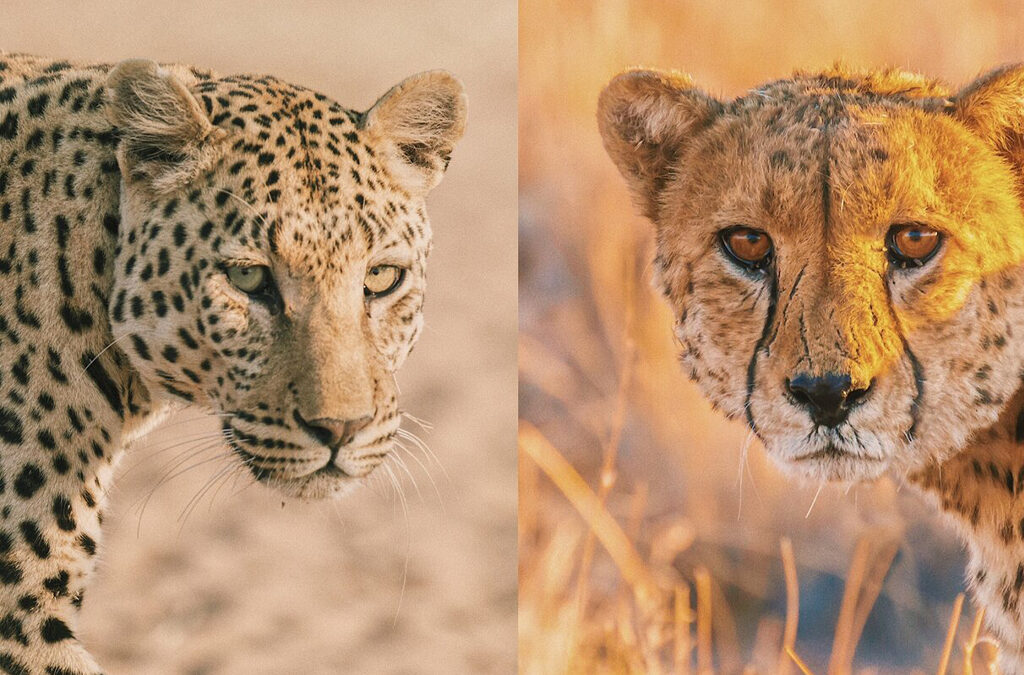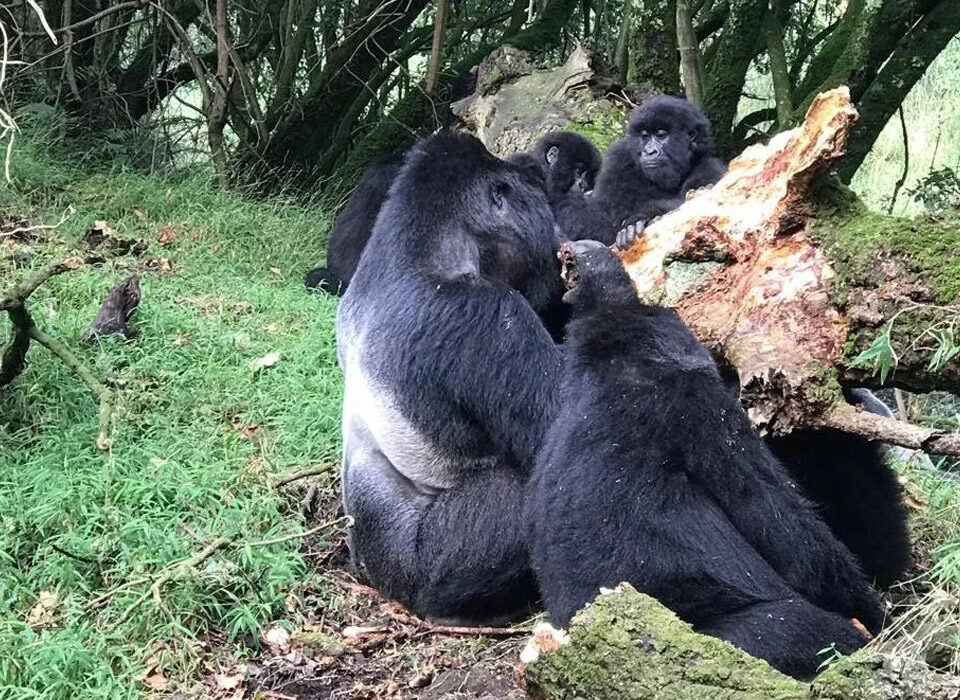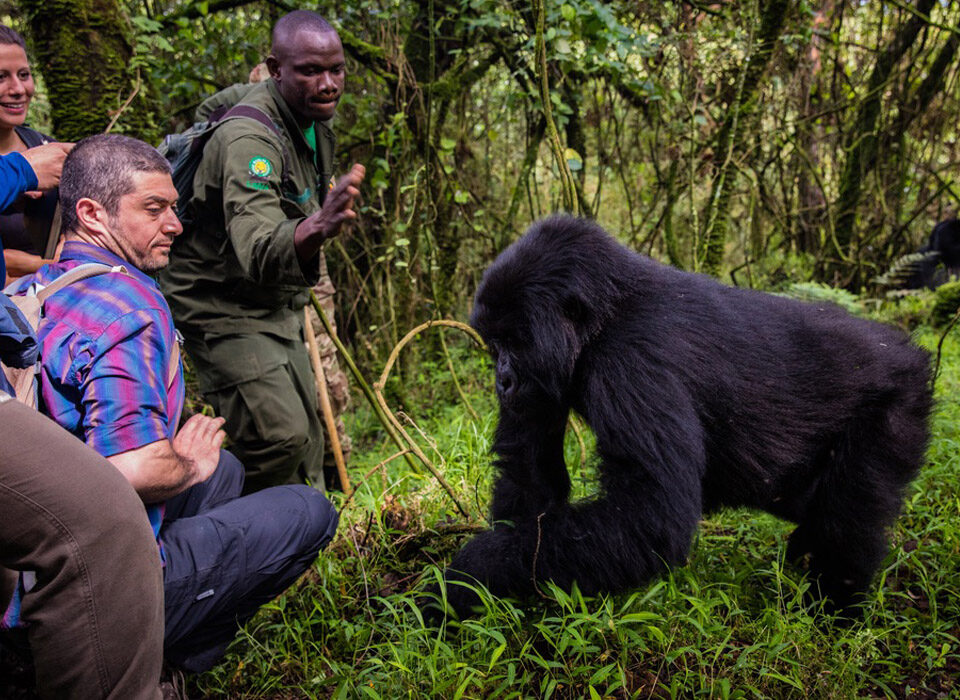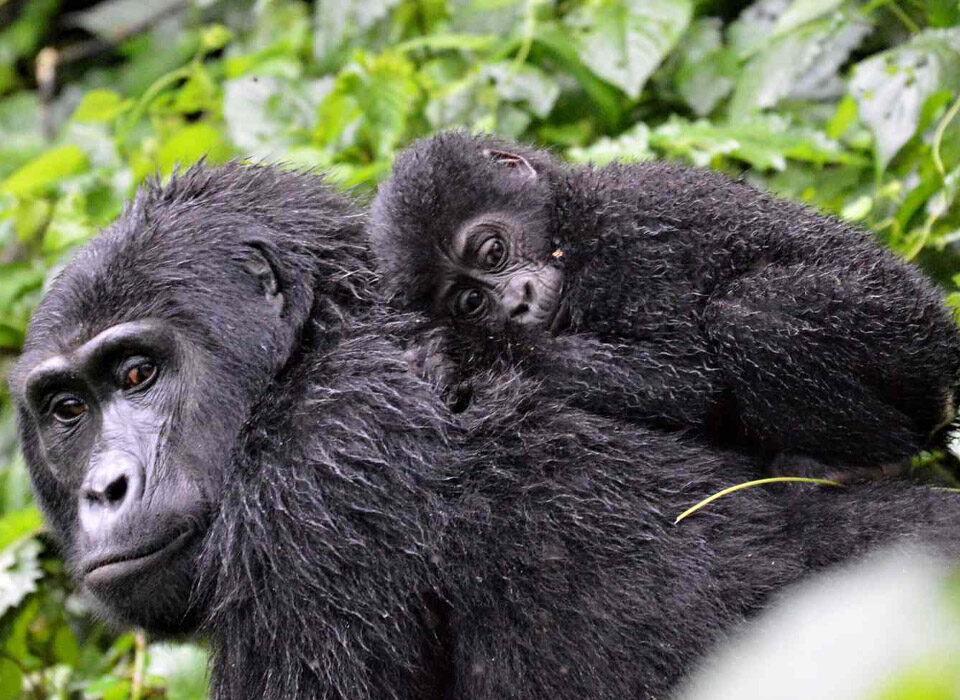- GET IN TOUCH WITH US:
- +256 753518160
- +256 777842166
- info@experiyatourcompany.com

Bird Watching Paradise in Uganda
September 29, 2025
Rwanda Gorilla Trekking Packages
September 29, 2025What’s the Difference Between Cheetahs and Leopards?

When people think of Africa’s majestic big cats, the cheetah and the leopard often come to mind. Both animals are iconic, elegant, and captivating predators that have fascinated explorers, conservationists, and safari enthusiasts for centuries. Yet, despite their fame, they are frequently confused with each other because of their spotted coats and overlapping habitats. In reality, the cheetah and the leopard differ greatly in physical appearance, hunting style, behavior, and even in the way they interact with their environment.
This comprehensive guide explores the differences between these two magnificent cats, highlighting their unique adaptations and offering insights on how to distinguish them in the wild. By the end, you will know exactly how to identify a cheetah from a leopard during your next safari adventure.
Introduction to Cheetahs and Leopards
The cheetah (Acinonyx jubatus) has earned worldwide recognition as the fastest land animal, capable of reaching speeds up to 120 kilometers per hour in short bursts. Its slender body, long legs, and aerodynamic design reflect an animal built for speed rather than strength. Cheetahs primarily hunt during the day, relying on their exceptional acceleration and sharp eyesight to chase down fast-moving prey such as gazelles.
The leopard (Panthera pardus), on the other hand, embodies stealth, strength, and adaptability. Found throughout sub-Saharan Africa and parts of Asia, leopards are powerfully built ambush predators. They rely on camouflage, patience, and strength to stalk and overpower their prey, often under the cover of night. Unlike cheetahs, leopards are excellent climbers, frequently dragging their kills high into trees to safeguard them from lions, hyenas, and other scavengers.
Physical Differences Between Cheetahs and Leopards
Size and Build
The body shape of a cheetah immediately reveals its specialization for speed. Slim, long-limbed, and lightweight, cheetahs typically weigh between 35 and 72 kilograms and measure around 1.1 to 1.5 meters in body length. Every feature of their physique is designed to maximize agility and reduce resistance when sprinting.
Leopards, in contrast, have a more compact and muscular build. Weighing between 30 and 90 kilograms, and reaching 1.3 to 1.7 meters in length, they are stockier and much stronger than cheetahs. Their power lies in their shoulders and jaws, which enable them to tackle larger prey and hoist heavy carcasses into trees.
Coat Pattern
At first glance, the spots on both cats may appear similar, but a closer look reveals an important difference. Cheetahs are covered with evenly distributed solid black spots on a golden-yellow coat. This pattern provides effective camouflage in open grasslands.
Leopards display a different pattern known as rosettes—clusters of black spots forming circular shapes with lighter centers. These rosettes break up the outline of their body and allow leopards to blend seamlessly into dense vegetation or forest shadows.
Facial Markings
Perhaps the most distinctive difference between the two cats lies on their faces. Cheetahs feature bold black “tear marks” running from the inner corners of their eyes down to their mouths. These markings help reduce glare from the sun and improve focus when chasing prey across open plains.
Leopards do not have tear marks. Instead, they possess a broader face with powerful jaw muscles and prominent whiskers, a reflection of their need for biting strength rather than speed.
Behavior and Hunting Techniques
Cheetah Behavior
Cheetahs are diurnal hunters, meaning they are most active during daylight hours when many larger predators are resting. They use keen eyesight to spot prey from a distance and rely on stealth to approach as closely as possible before launching into a high-speed chase. A cheetah’s hunt is often brief, lasting less than 30 seconds, because prolonged exertion can lead to overheating. Once they trip or tackle their prey, cheetahs suffocate it with a throat bite.
In places like the Serengeti in Tanzania, cheetahs can often be observed stalking Thomson’s gazelles. They crouch low in the grass, inch forward with calculated precision, and then explode into a burst of speed that few animals can match.
Leopard Behavior
Leopards adopt a completely different hunting strategy. They are primarily nocturnal and crepuscular, active at dusk and dawn. Their style is one of patience and stealth. Leopards silently stalk prey, inching closer under the cover of darkness before launching a surprise ambush. Unlike cheetahs, they rarely engage in long chases. Instead, they rely on power to overpower their prey quickly.
Leopards are also solitary and fiercely territorial. Their climbing ability is unmatched among big cats, and it is common to see them resting high in the branches of acacia trees with their latest kill safely stashed out of reach of scavengers. In South Africa’s Kruger National Park, for instance, leopards are often seen hoisting impalas or warthogs into trees—sometimes animals twice their body weight.
Habitat and Distribution
Cheetahs favor open landscapes such as savannas, grasslands, and semi-desert regions where they can fully exploit their speed. Their preference for wide, unobstructed terrain reflects their reliance on running rather than ambushing prey.
Leopards, in contrast, thrive in a wide range of habitats. They adapt well to savannas, dense forests, mountains, river valleys, and even the edges of human settlements. This adaptability has made them one of the most widespread big cat species on Earth.
Vocalizations and Communication
Another striking difference lies in the way these cats communicate. Cheetahs produce high-pitched chirps, purrs, and growls but lack the ability to roar. Their vocal repertoire reflects a more subdued form of communication, useful for mothers and cubs or for signaling mild threats.
Leopards, by contrast, are capable of roaring, growling, and producing a distinctive rasping cough that echoes through the night. This powerful vocal ability reinforces their territorial dominance and helps them communicate over long distances.
Conservation Status and Threats
Cheetahs are currently classified as vulnerable. Their global population has dwindled to around 7,000 individuals in the wild. Habitat loss, human-wildlife conflict, and a shrinking prey base remain significant threats. High cub mortality, often caused by predation from lions and hyenas, also limits population growth.
Leopards, though more widespread and resilient, face their own challenges. Habitat fragmentation, illegal hunting, and conflicts with humans reduce their numbers in many regions. However, their adaptability has allowed them to maintain a more stable population compared to cheetahs.
How to Tell Them Apart in the Wild
When observing these cats in the wild, several clues can help you distinguish them. Look first at the face: cheetahs have distinct black tear marks, while leopards do not. Next, examine the coat. Solid black spots identify a cheetah, while rosettes mark a leopard. Pay attention to body build as well—cheetahs are lean and aerodynamic, while leopards are muscular and compact.
Behavior provides further hints. A cat hunting during bright daylight in open grassland is most likely a cheetah. One stalking at night or resting high in a tree with a carcass is almost certainly a leopard. Finally, listen closely: a chirping sound points to a cheetah, while a roar or rasping cough belongs to a leopard.
Where to See Cheetahs and Leopards
Both cats inhabit some of Africa’s most iconic safari destinations, though sightings can differ in frequency. Cheetahs are often observed in wide open areas such as Tanzania’s Serengeti, Kenya’s Masai Mara, Botswana’s Okavango Delta, and the Kgalagadi Transfrontier Park on the border of South Africa and Botswana. These landscapes provide the visibility and space they need for their high-speed hunts.
Leopards are more elusive but can be seen in a wider range of locations. South Africa’s Kruger National Park and Sabi Sands Game Reserve are particularly famous for reliable leopard sightings. Beyond Africa, they also roam across Asia, with Sri Lanka’s Yala National Park being a prime location to encounter them. In East Africa, the Masai Mara offers opportunities to see both cheetahs and leopards, sometimes within the same day.
Fascinating Facts About Cheetahs and Leopards
The cheetah holds the record as the fastest runner on land, yet it cannot roar. Its speed is both its strength and its vulnerability, for it often tires quickly after hunts. Leopard strength lies in different abilities. They are astonishing climbers, able to haul prey much heavier than themselves into trees. Cheetah cubs suffer very high mortality due to predation, while leopards, thanks to their stealth and adaptability, maintain the broadest range of any big cat species.
Conclusion: Cheetah vs Leopard — Which Big Cat Fascinates You More?
Both the cheetah and the leopard represent the extraordinary diversity of evolutionary adaptation. The cheetah dazzles with unmatched speed and graceful hunting displays across open plains, while the leopard captivates with raw power, stealth, and an ability to thrive in almost any environment.
Next time you find yourself on safari, watch closely for the subtle but striking differences between them. Spot the tear marks of the cheetah or the rosettes of the leopard, listen for their distinct vocalizations, and observe their contrasting hunting strategies. Each encounter with these magnificent animals offers a deeper appreciation of their beauty and resilience. In the end, whether you are drawn to the cheetah’s speed or the leopard’s strength, both cats will leave you in awe of nature’s ingenuity.



